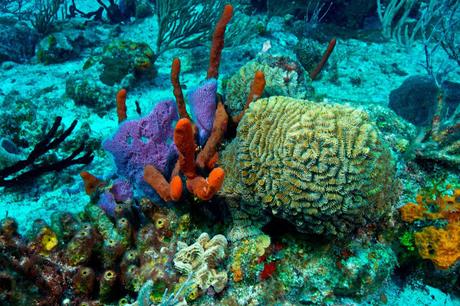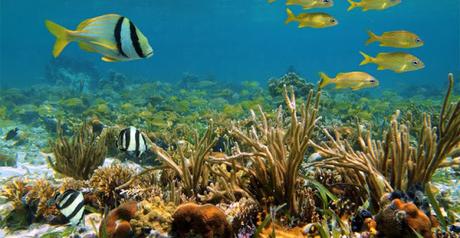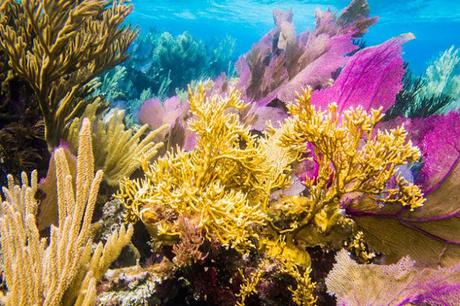 Investing in
nature can be one of the most effective adaptation measures in the fight
against climate change. Carbon capture is so critical for the next 20 years and
some natural assets, such as coral reefs, can be five to ten times more
effective at this than man-made solutions. What about insuring them ?
Investing in
nature can be one of the most effective adaptation measures in the fight
against climate change. Carbon capture is so critical for the next 20 years and
some natural assets, such as coral reefs, can be five to ten times more
effective at this than man-made solutions. What about insuring them ?
To many of us, after decades of experience in Insurance, still the insuring terms and conditions are not fully understood. Mostly it is Automobiles (Motor) insurance, Health policies and a bit of Property and little of Liability Insurance.Insurance protects policy holders and pays for loss or damage to insured property during the policy period, caused by insued perils.Insurers would often say – Insurers must understand the risk before underwriting and to be eligible for underwriting, the risk should be exposed to a peril but the result should be uncertain, loss should be ascertainable in monetary terms and should be homogenous for the Underwriter to apply term and more importantly the rate – if yes, how would a new risk like ‘a rocket launch’ would be underwritten !
Insurance Policies indemnity ie., place the insured in the position, they were prior to the occurrence by monetary payment of the extent of damages but would a Policy respond to a situation prior to a loss, ie., in preventing a loss ! – loss minimization charges are payable yet !!.. .. … Parametric insurance is a type of insurance that does not indemnify the pure loss, but ex-ante agrees to make a payment upon the occurrence of a triggering event. The triggering event is often a catastrophic natural event which may ordinarily precipitate a loss or a series of losses. These insurance principles are applied to agricultural crop insurance and other normal risks not of the nature of disaster, if the outcome of the risk is correlated to a parameter or an index of parameters. Perplexing to say the least.
The Mesoamerican Barrier Reef System (MBRS), also popularly known as the Great Mayan Reef, is a marine region that stretches over 1,000 kilometres (620 mi) from Isla Contoy at the tip of the Yucatán Peninsula down to Belize, Guatemala and the Bay Islands of Honduras. The marine barrier ishome to more than 500 fish species, 60 coral species, 350 mollusks andmarine mammals, algaes and seagrasses. Critically endangered species like - saltwater crocodile; green, hawksbill and loggerhead sea turtles; Nassau and goliath grouper; manatees; all live here besides the largest aggregation of whale sharks in the world.An estimated 2 million people are woven into the very fabric of the MAR’s rich coastal environments and count on healthy ecosystems here for their food, water and livelihoods.

Salinity, storm waves, and oxygen-poor mud discourage understory growth in the mangroves.Mesoamerican mangroves form multiple lines of defense for the reef system. The first line is the tall mangrove forest along the coast and up the mouths of tidal rivers. The second line, and sometimes a third and fourth, occur offshore, in places where pointy mangrove seedlings have taken root atop a series of shallow marine ridges. Each clump slowly gathers the makings of an islet under itself. These islets grow into islands—mangrove cays—arranged in linear archipelagoes. The clusters of cays work as screens, benefiting the sea grass by moderating wave action and the coral reef by intercepting silt, fertilizers, and toxins in runoff from land. The mangroves, in addition to defense, provide mulch. They can shed tons of leaves per acre every year. Fungi and bacteria break down this leaf litter and consume it, then are consumed by tiny worms and crustaceans, which in turn feed small fish, which feed larger fish and birds and crocodiles.
Alongside the ongoing pandemic, the upcoming renewals, pricing, and alternative reinsurance capital, reinsurer’s are clamouring for innovative use of technology as it looks to help narrow the protection gap in both emerging and developed markets.Reinsurers like SwissRe have made strides in areas like U.S. flood space, aided by technologies such as satellite imagery, alongside its support for the development of a parametric insurance solution designed to help the conservation of the Mesoamerican Reef in Mexico. Global reinsurance giant Swiss Re has supported the development of an innovative new parametric insurance solution designed to help the conservation of the Mesoamerican Reef, which includes protecting the coral reef and beach sand against the impacts of major hurricanes.
The innovative insurance solutionwas announced at the 2018 World Ocean Summit in Mexico, designed to protect the longest barrier reef in the Western Hemisphere, the Mesoamerican Reef, which protects the most important tourism hub in Mexico, the Riviera Maya, and which is home to some of the planet’s most unique and important coral reefs.At the 2018 World Ocean Summit, the Nature Conservancy and the state government of Quintana Roo in Mexico, announced the establishment of a ‘Coastal Zone Management Trust’, which will cover a portion of the Mesoamerican Reef along Mexico’s Yucatan Peninsula, and which is designed to promote the conservation of coastal regions across the Mexican Caribbean.The Trust will also finance what will become the world’s first parametric insurance products for covering a coral reef and beach sand against the impacts of hurricanes.
This insurance-for-nature approach is a promising example of creative financing to address imminent challenges facing marine ecosystems, both in Mexico and around the world. The Riviera Maya receives over 10 million tourists each year, and generates US $10 billion annually. Swiss Re explains that funds for both the trust and subsequent insurance premiums will be collected as a slice of the tourism taxes and other government resources.Swiss Re explains that a healthy coral reef can lower the economic losses caused by hurricanes and storms by as much as 26%. And while coral cover is also eroded by disease, bleaching events, diminishing herbivores, and algae overgrowth, reefs can lose between 20% and 60% of live coral cover following a Category 4 or 5 storm.
Parametric reef insurance is an innovative financial mechanism that will cover the costs of rapid response actions to identify and address damage to reefs after the impact of a hurricane.Traditional insurance covers against a risk, and in the event that it materializes, a damage assessment is carried out and then a payment is granted. Parametric insurance is built under previously analyzed technical parameters, such as the type of event, the level of damage and the characteristics that can generate a negative or catastrophic impact. Two parties take part in parametric reef insurance: The entity or custodian of the reefs exposed to the risk of a catastrophic event, in this case a hurricane as it’s defined in the design of the insurance; and the insurance company. Those parties then agree upon the characteristics/parameters of the hurricane or climatic phenomenon that will trigger the insurance payment. If, during the validity of the parametric insurance, a natural phenomenon occurs, the fulfillment of the parameters would be verified to make the insurance payment.Verification of compliance with the parameter(s) established in the policy will be carried out by an independent third party, such as the National Hurricane Center, a division of the Tropical Prediction Center of the National Weather Service of the United States.The parameters of the sites to be insured along the MAR are currently being evaluated. Tentatively, it could be determined that a hurricane with a speed starting at 64 knots -equivalent to 118,528 kilometers per hour - be one of the insurance parameters.

The payout will increase up to the annual aggregate limit over the 12-month policy depending on the wind speed: 110 knots or more will trigger a payout of 40% of the maximum limit, 130 or more will trigger an 80% payout while 160 knots or more will trigger a full limit payout.Depending on the severity of storms, “the insurance policy would pay out up to that limit and if that limit is not met on the first storm, the second storm would still be eligible for a payout up to that limit,”
Interesting ! ~ though the concept in its entirety is not understood by minds which are tuned to calculating indemnity on the extent of loss, further adjusted by depreciation, salvage, adequacy of insurance and policy excess.
With regards – S. Sampathkumar
26.09.2020

